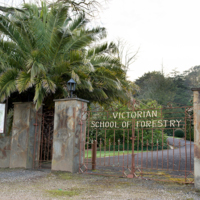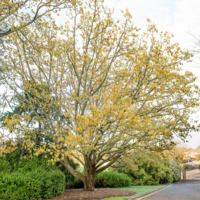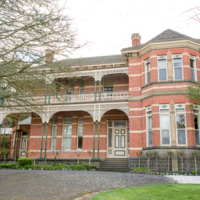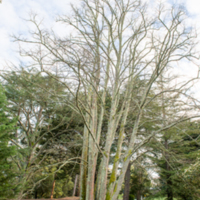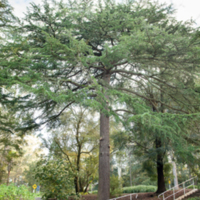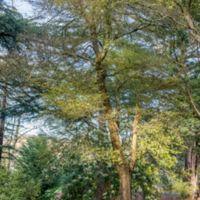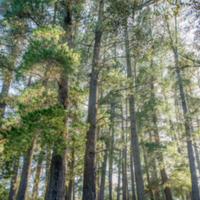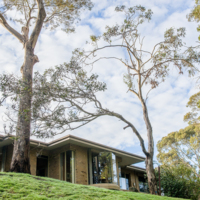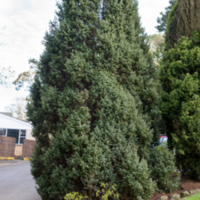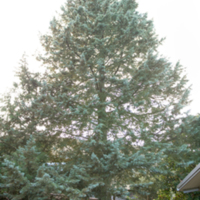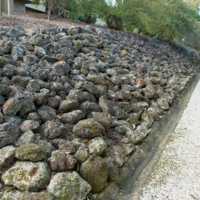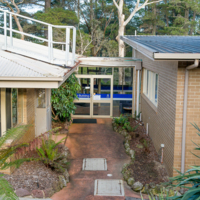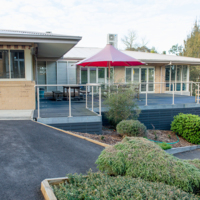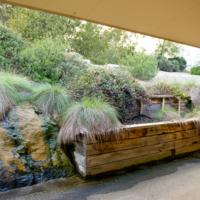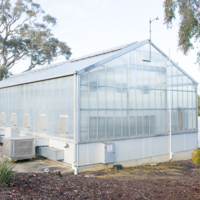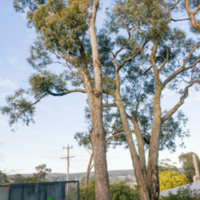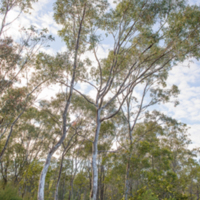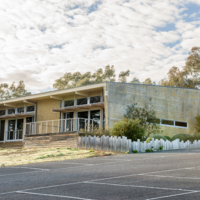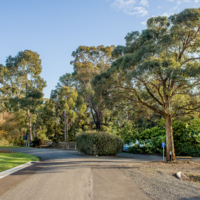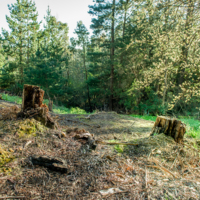Grounds and Arboretum
Title
Grounds and Arboretum
Creator
Creswick Campus Historical Collection
Date
2017
Type
Still Image
Identifier
CCWT
Coverage
Grounds of the Creswick Campus
Collection Items
1. Main gates.
Erected in 1952 to acknowledge the contribution of Sir Alexander Peacock, (who was from the Creswick area).
2. Quercus acutissima (sawtooth oak).
Native to China, this uncommonly planted tree was one of the earliest plantings in the grounds. It is an attractive urban amenity tree with the ability to tolerate adverse conditions such as drought and poor soils.
3. Tremearne House.
Originally called ‘Pednolva’, the house was built in the early 1880s by Dr John Tremearne, (medical officer for the hospital from 1872 to 1888). The State Government acquired the House in 1909, converting it into classrooms, a library and museum for…
4. Tilea europea (European linden).
Planted in the early 1900s, it is one of the oldest and most impressive plants on the grounds. John Tremearne acquired seedlings from the State nursery in Sawpit Gully and, with hospital staff, planted the seedling.
5. Cedrus libani (Lebanon cedar).
Native to the mountains of the Mediterranean region, this species is known for its high quality timber, oils and resins.
6. Ulmus minor ‘subsp.sarniensis (Jersey elm).
This is one of only a few specimens of this species in the State.
7. Pinus radiata (Monterey pine).
The Pinus radiata in the Pine Triangle are at least 85 years old. Native to small areas on the central coast of California and Mexico, these conifers proved to perform well under Victorian conditions because they were fast-growing, tolerant of the…
8. Eucalyptus leucoxylon (yellow gum).
Prince Charles planted this tree when he stayed on site in 1974.
9. Juniperus communis (common juniper).
Native throughout the cool temperate Northern Hemisphere, the cones are berry-like and, when dried, can have culinary use.
10. Cupressus arizonica (Arizona cypress).
The landscaping in this area was commenced by the Public Works Department, but completed by students. While the shrubs in this area have changed over time, this specimen has survived since 1969.
12. The Herbarium.
Located in the University Building, the herbarium houses a large collection of plant species, including seven specimens that were contributed by botanist Baron Von Mueller, Director of the Royal Botanic Gardens, Melbourne 1857 to 1873. The herbarium…
13. Stage 1 and stage 2 buildings.
The hub of research on the campus, accommodating a range of laboratories and research staff and students.
14. Stage 1 wall.
The shale profile seen here is an excellent example of the growing conditions in the area and the soil profile after the area was mined.
15. Glasshouse.
Students use this specialised climate controlled glasshouse to conduct research in many facets of plant growth and their tolerances.
16. Eucalyptus aromaphloia (Creswick apple-box).
Endemic to Creswick, Victoria, these specimens are notable for being the basis on which the species was first described for botanical listing.
17. Eucalyptus camaldulensis (red gum).
Specimens south of the gym are used for research purposes and field trials for students, examining how red gums survive the local soil conditions.
18. Gymnasium.
East of the car park, opened in 2012, it is used by both the University community and the residents of Creswick.
20. Fox Canyon.
Named after the large number of foxes that lived there. Facing north, in 1969 an arboretum was established for Forest Botany. It included a total of 53 species, representing 11 different genera, mainly conifers and Tasmanian eucalyptus trees.
